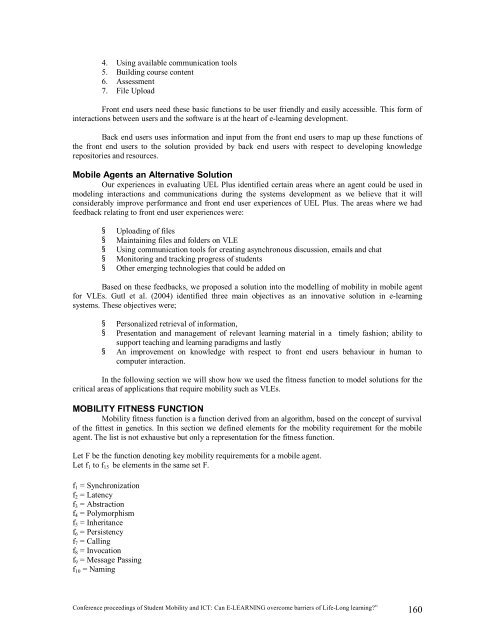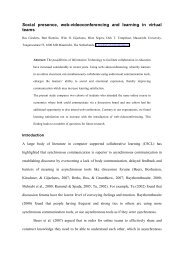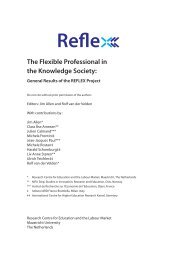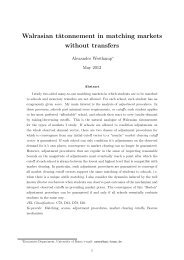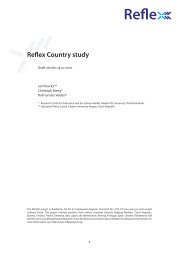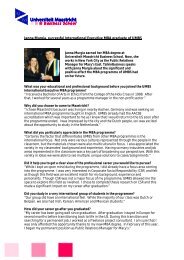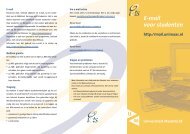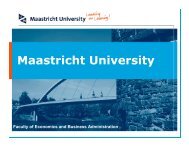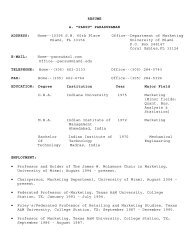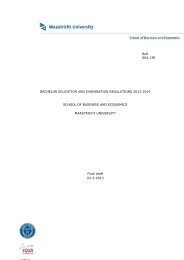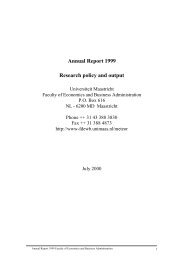proceedings of Student Mobility and ICT: Can E-LEARNING
proceedings of Student Mobility and ICT: Can E-LEARNING
proceedings of Student Mobility and ICT: Can E-LEARNING
You also want an ePaper? Increase the reach of your titles
YUMPU automatically turns print PDFs into web optimized ePapers that Google loves.
4. Using available communication tools<br />
5. Building course content<br />
6. Assessment<br />
7. File Upload<br />
Front end users need these basic functions to be user friendly <strong>and</strong> easily accessible. This form <strong>of</strong><br />
interactions between users <strong>and</strong> the s<strong>of</strong>tware is at the heart <strong>of</strong> e-learning development.<br />
Back end users uses information <strong>and</strong> input from the front end users to map up these functions <strong>of</strong><br />
the front end users to the solution provided by back end users with respect to developing knowledge<br />
repositories <strong>and</strong> resources.<br />
Mobile Agents an Alternative Solution<br />
Our experiences in evaluating UEL Plus identified certain areas where an agent could be used in<br />
modeling interactions <strong>and</strong> communications during the systems development as we believe that it will<br />
considerably improve performance <strong>and</strong> front end user experiences <strong>of</strong> UEL Plus. The areas where we had<br />
feedback relating to front end user experiences were:<br />
§ Uploading <strong>of</strong> files<br />
§ Maintaining files <strong>and</strong> folders on VLE<br />
§ Using communication tools for creating asynchronous discussion, emails <strong>and</strong> chat<br />
§ Monitoring <strong>and</strong> tracking progress <strong>of</strong> students<br />
§ Other emerging technologies that could be added on<br />
Based on these feedbacks, we proposed a solution into the modelling <strong>of</strong> mobility in mobile agent<br />
for VLEs. Gutl et al. (2004) identified three main objectives as an innovative solution in e-learning<br />
systems. These objectives were;<br />
§ Personalized retrieval <strong>of</strong> information,<br />
§ Presentation <strong>and</strong> management <strong>of</strong> relevant learning material in a timely fashion; ability to<br />
support teaching <strong>and</strong> learning paradigms <strong>and</strong> lastly<br />
§ An improvement on knowledge with respect to front end users behaviour in human to<br />
computer interaction.<br />
In the following section we will show how we used the fitness function to model solutions for the<br />
critical areas <strong>of</strong> applications that require mobility such as VLEs.<br />
MOBILITY FITNESS FUNCTION<br />
<strong>Mobility</strong> fitness function is a function derived from an algorithm, based on the concept <strong>of</strong> survival<br />
<strong>of</strong> the fittest in genetics. In this section we defined elements for the mobility requirement for the mobile<br />
agent. The list is not exhaustive but only a representation for the fitness function.<br />
Let F be the function denoting key mobility requirements for a mobile agent.<br />
Let f1 to f15 be elements in the same set F.<br />
f1 = Synchronization<br />
f2 = Latency<br />
f3 = Abstraction<br />
f4 = Polymorphism<br />
f5 = Inheritance<br />
f6 = Persistency<br />
f7 = Calling<br />
f8 = Invocation<br />
f9 = Message Passing<br />
f10 = Naming<br />
Conference <strong>proceedings</strong> <strong>of</strong> <strong>Student</strong> <strong>Mobility</strong> <strong>and</strong> <strong>ICT</strong>: <strong>Can</strong> E-<strong>LEARNING</strong> overcome barriers <strong>of</strong> Life-Long learning?” 160


